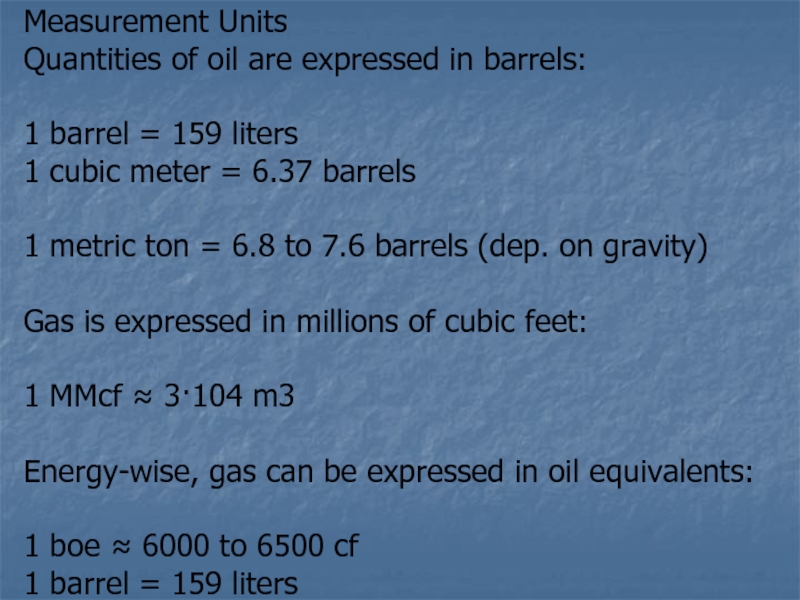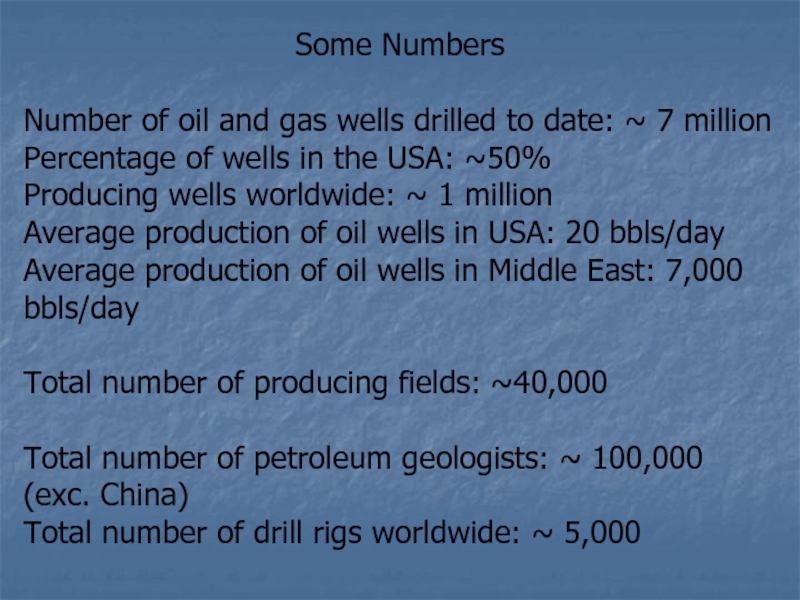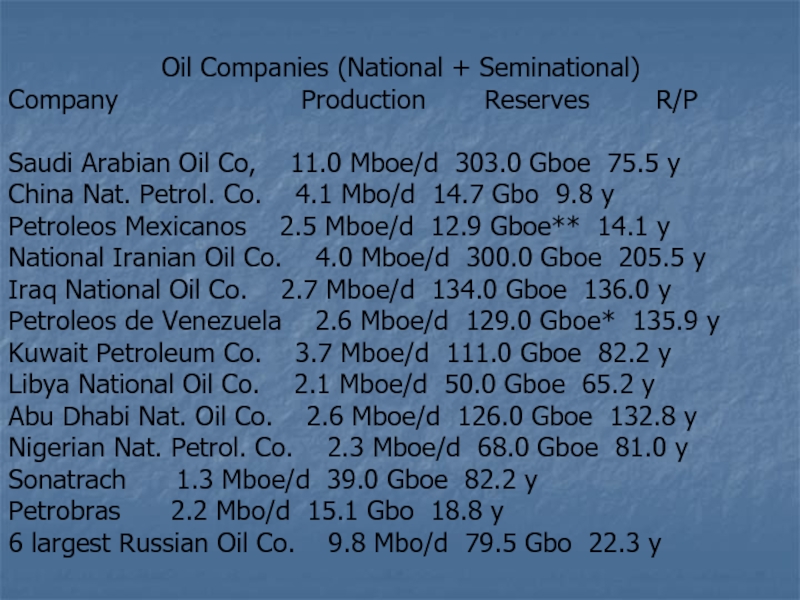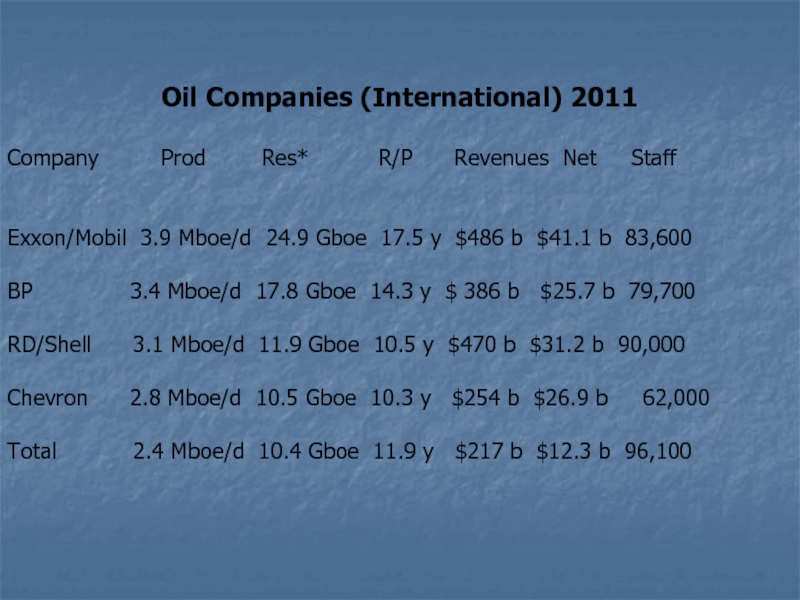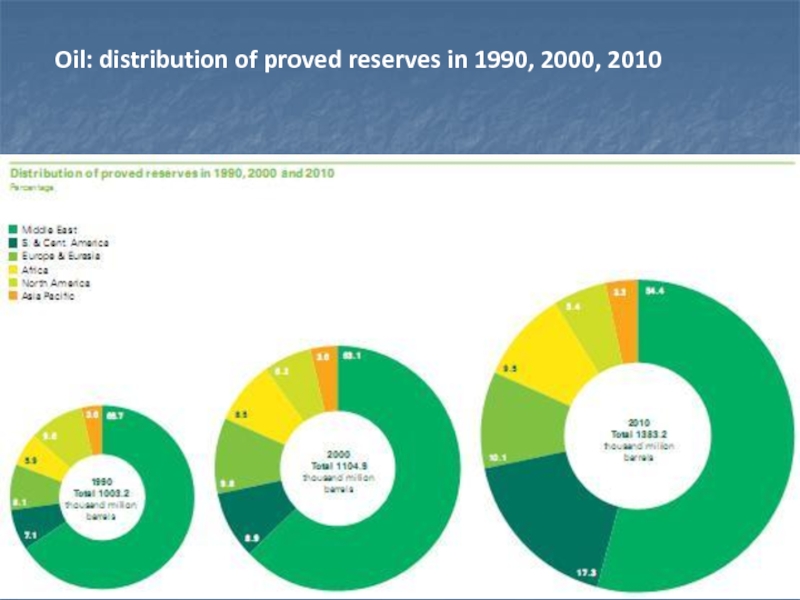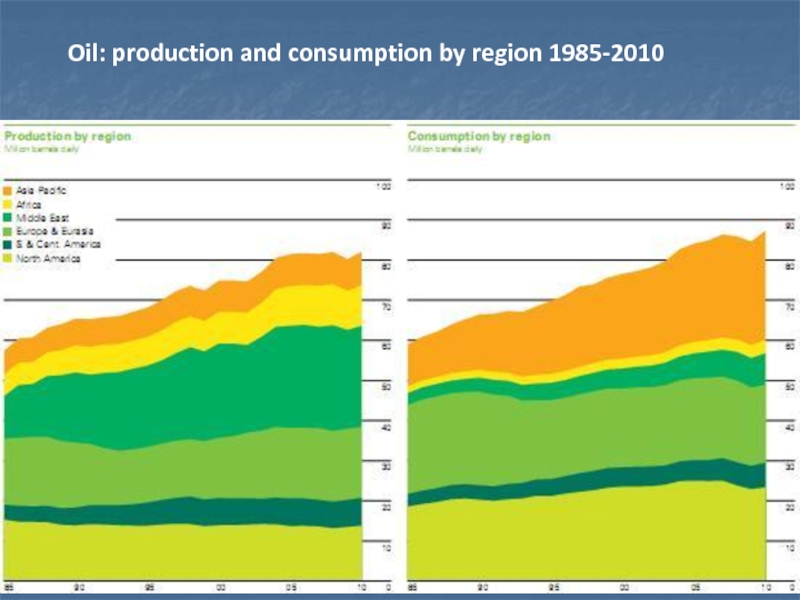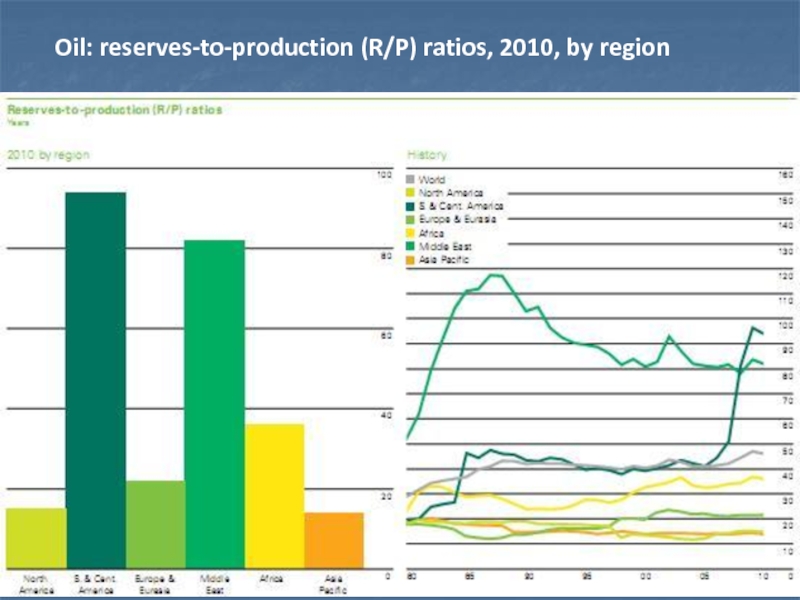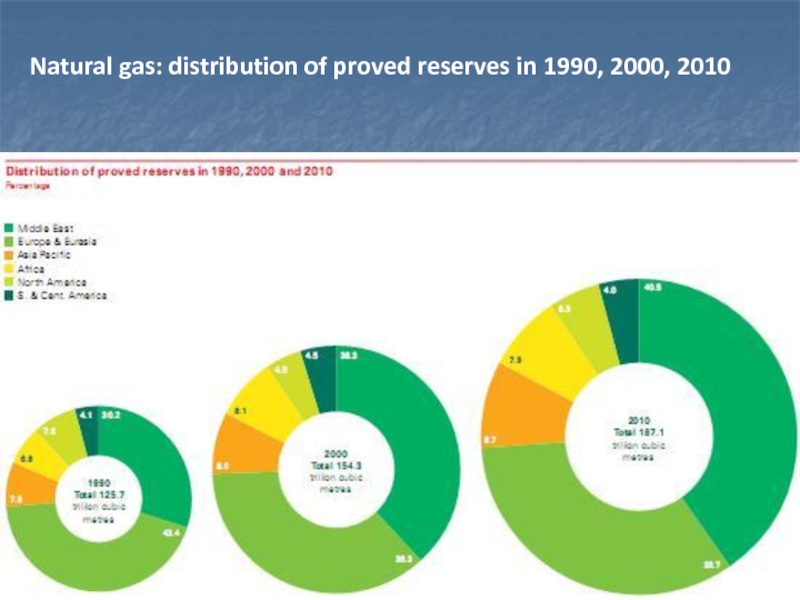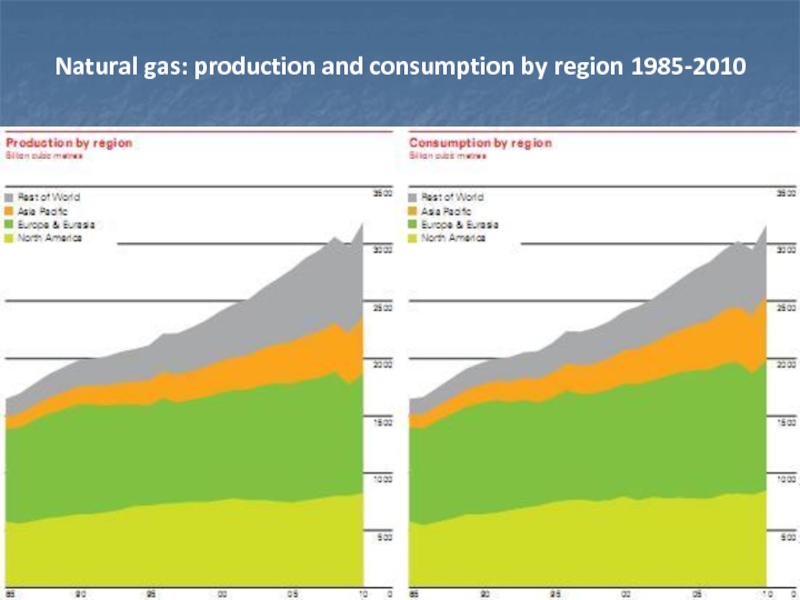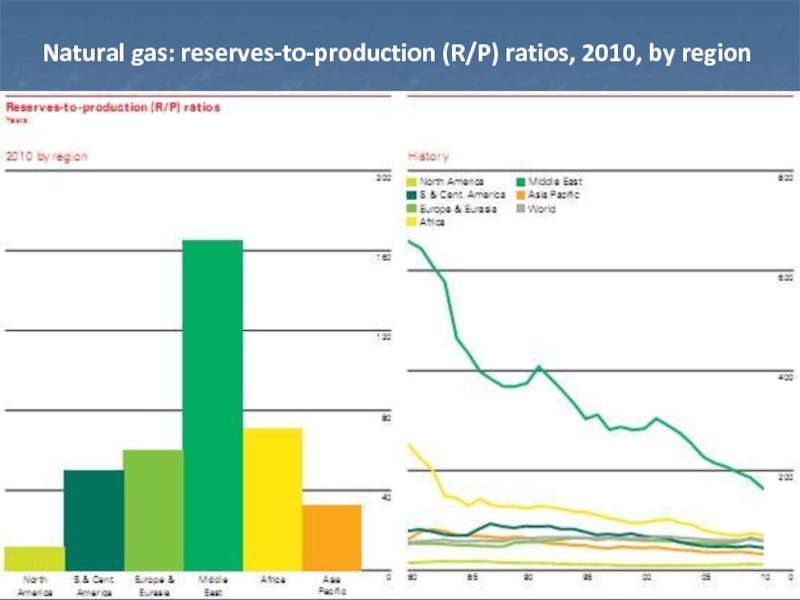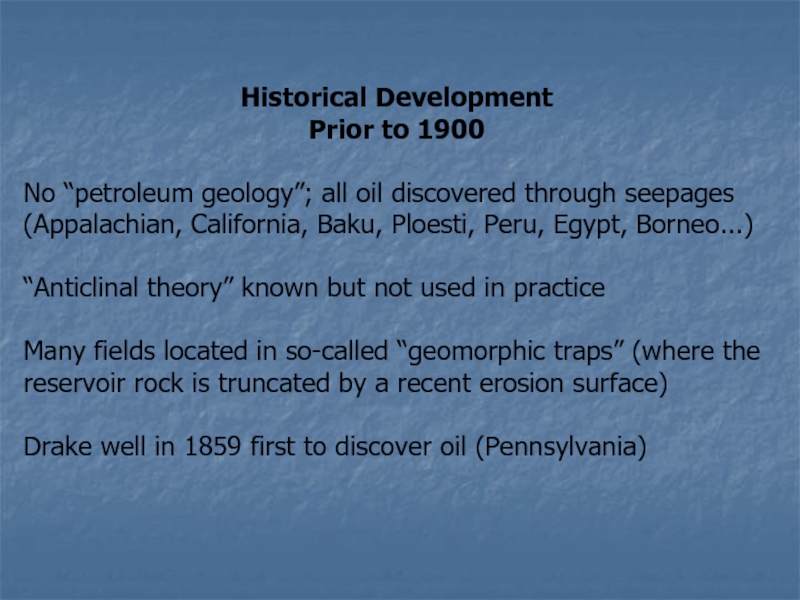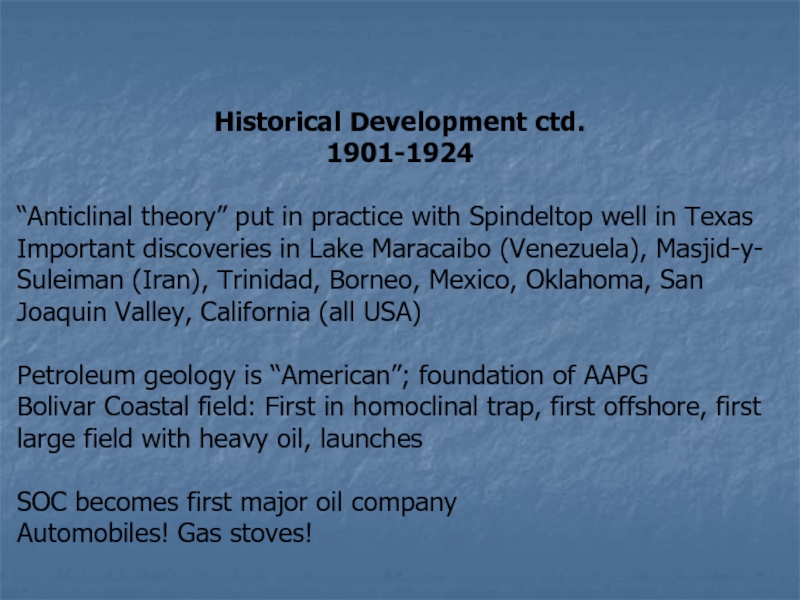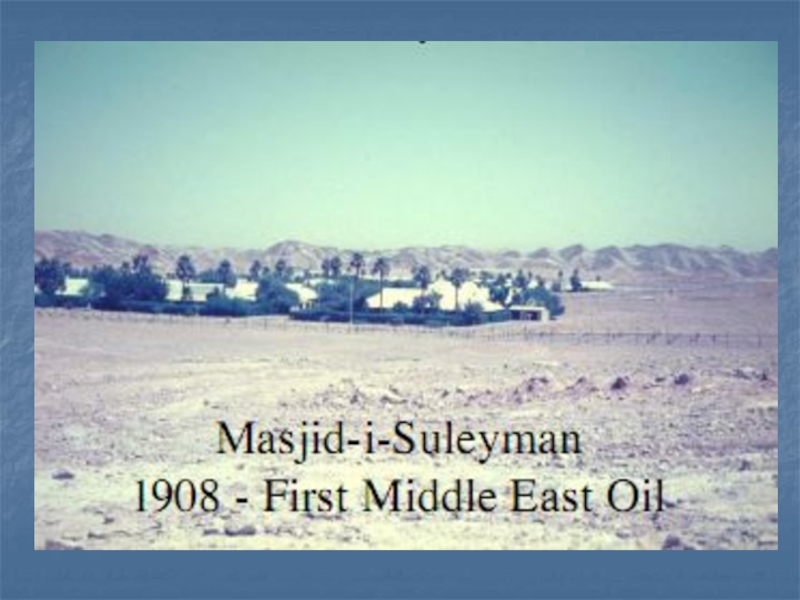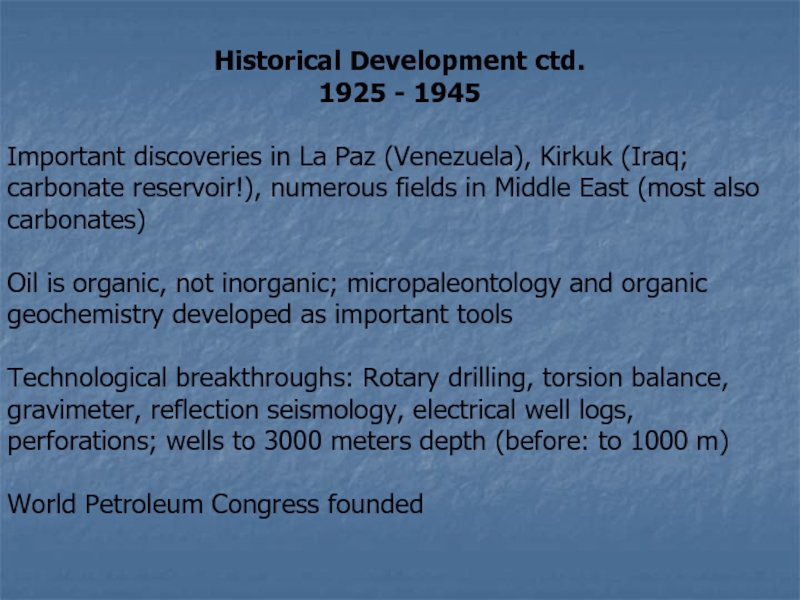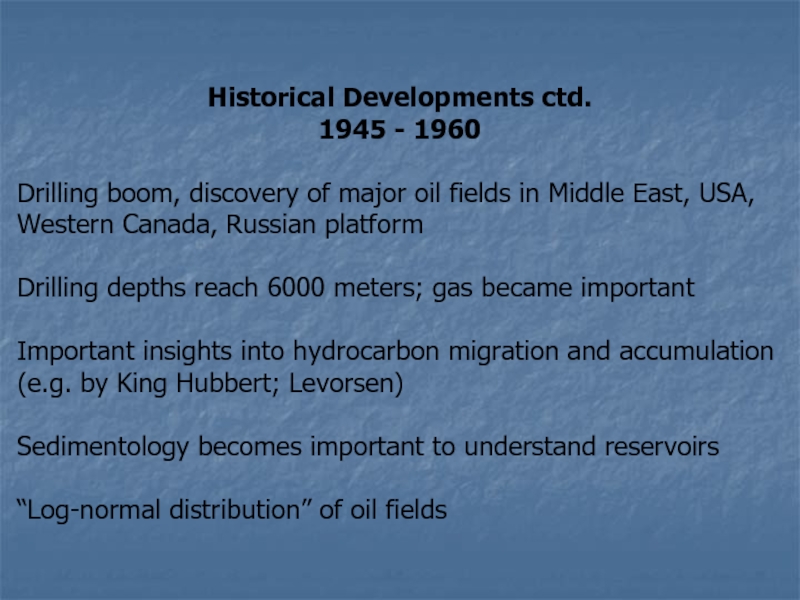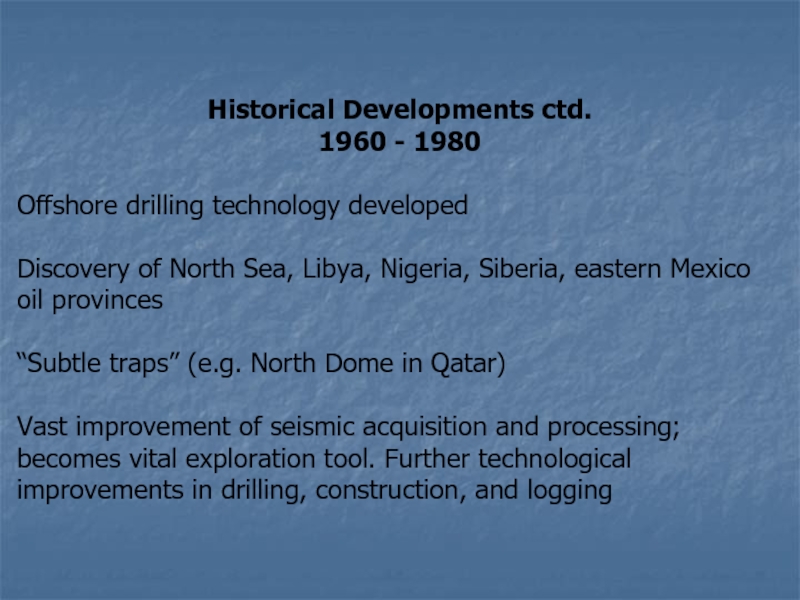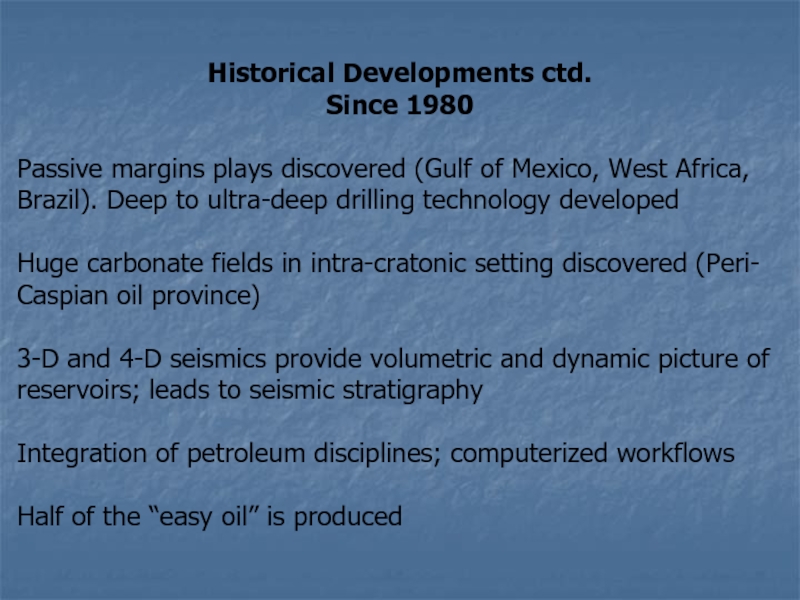Слайд 2Measurement Units
Quantities of oil are expressed in barrels:
1 barrel = 159 liters
1 cubic meter = 6.37
barrels
1 metric ton = 6.8 to 7.6 barrels (dep. on gravity)
Gas is expressed in millions of cubic feet:
1 MMcf ≈ 3·104 m3
Energy-wise, gas can be expressed in oil equivalents:
1 boe ≈ 6000 to 6500 cf
1 barrel = 159 liters
Слайд 3Some Numbers
Number of oil and gas wells drilled to
date: ~ 7 million
Percentage of wells in the USA:
~50%
Producing wells worldwide: ~ 1 million
Average production of oil wells in USA: 20 bbls/day
Average production of oil wells in Middle East: 7,000 bbls/day
Total number of producing fields: ~40,000
Total number of petroleum geologists: ~ 100,000 (exc. China)
Total number of drill rigs worldwide: ~ 5,000
Слайд 4Oil Companies (National + Seminational)
Company
Production
Reserves R/P
Saudi Arabian Oil Co, 11.0 Mboe/d 303.0 Gboe 75.5 y
China Nat. Petrol. Co. 4.1 Mbo/d 14.7 Gbo 9.8 y
Petroleos Mexicanos 2.5 Mboe/d 12.9 Gboe** 14.1 y
National Iranian Oil Co. 4.0 Mboe/d 300.0 Gboe 205.5 y
Iraq National Oil Co. 2.7 Mboe/d 134.0 Gboe 136.0 y
Petroleos de Venezuela 2.6 Mboe/d 129.0 Gboe* 135.9 y
Kuwait Petroleum Co. 3.7 Mboe/d 111.0 Gboe 82.2 y
Libya National Oil Co. 2.1 Mboe/d 50.0 Gboe 65.2 y
Abu Dhabi Nat. Oil Co. 2.6 Mboe/d 126.0 Gboe 132.8 y
Nigerian Nat. Petrol. Co. 2.3 Mboe/d 68.0 Gboe 81.0 y
Sonatrach 1.3 Mboe/d 39.0 Gboe 82.2 y
Petrobras 2.2 Mbo/d 15.1 Gbo 18.8 y
6 largest Russian Oil Co. 9.8 Mbo/d 79.5 Gbo 22.3 y
Слайд 5Oil Companies (International) 2011
Company
Prod Res* R/P
Revenues Net Staff
Exxon/Mobil 3.9 Mboe/d 24.9 Gboe 17.5 y $486 b $41.1 b 83,600
BP 3.4 Mboe/d 17.8 Gboe 14.3 y $ 386 b $25.7 b 79,700
RD/Shell 3.1 Mboe/d 11.9 Gboe 10.5 y $470 b $31.2 b 90,000
Chevron 2.8 Mboe/d 10.5 Gboe 10.3 y $254 b $26.9 b 62,000
Total 2.4 Mboe/d 10.4 Gboe 11.9 y $217 b $12.3 b 96,100
Слайд 6Oil: distribution of proved reserves in 1990, 2000, 2010
Слайд 7Oil: production and consumption by region 1985-2010
Слайд 8Oil: reserves-to-production (R/P) ratios, 2010, by region
Слайд 9Natural gas: distribution of proved reserves in 1990, 2000, 2010
Слайд 10Natural gas: production and consumption by region 1985-2010
Слайд 11Natural gas: reserves-to-production (R/P) ratios, 2010, by region
Слайд 12Historical Development
Prior to 1900
No “petroleum geology”; all
oil discovered through seepages
(Appalachian, California, Baku, Ploesti, Peru, Egypt,
Borneo...)
“Anticlinal theory” known but not used in practice
Many fields located in so-called “geomorphic traps” (where the
reservoir rock is truncated by a recent erosion surface)
Drake well in 1859 first to discover oil (Pennsylvania)
Слайд 13Historical Development ctd.
1901-1924
“Anticlinal theory” put in practice with
Spindeltop well in Texas
Important discoveries in Lake Maracaibo (Venezuela),
Masjid-y-
Suleiman (Iran), Trinidad, Borneo, Mexico, Oklahoma, San
Joaquin Valley, California (all USA)
Petroleum geology is “American”; foundation of AAPG
Bolivar Coastal field: First in homoclinal trap, first offshore, first
large field with heavy oil, launches
SOC becomes first major oil company
Automobiles! Gas stoves!
Слайд 15Historical Development ctd.
1925 - 1945
Important discoveries in
La Paz (Venezuela), Kirkuk (Iraq;
carbonate reservoir!), numerous fields in
Middle East (most also
carbonates)
Oil is organic, not inorganic; micropaleontology and organic
geochemistry developed as important tools
Technological breakthroughs: Rotary drilling, torsion balance,
gravimeter, reflection seismology, electrical well logs,
perforations; wells to 3000 meters depth (before: to 1000 m)
World Petroleum Congress founded
Слайд 16Historical Developments ctd.
1945 - 1960
Drilling boom, discovery
of major oil fields in Middle East, USA,
Western Canada,
Russian platform
Drilling depths reach 6000 meters; gas became important
Important insights into hydrocarbon migration and accumulation
(e.g. by King Hubbert; Levorsen)
Sedimentology becomes important to understand reservoirs
“Log-normal distribution” of oil fields
Слайд 17Historical Developments ctd.
1960 - 1980
Offshore drilling technology
developed
Discovery of North Sea, Libya, Nigeria, Siberia, eastern
Mexico
oil provinces
“Subtle traps” (e.g. North Dome in Qatar)
Vast improvement of seismic acquisition and processing;
becomes vital exploration tool. Further technological
improvements in drilling, construction, and logging
Слайд 18Historical Developments ctd.
Since 1980
Passive margins plays discovered
(Gulf of Mexico, West Africa,
Brazil). Deep to ultra-deep drilling
technology developed
Huge carbonate fields in intra-cratonic setting discovered (Peri-
Caspian oil province)
3-D and 4-D seismics provide volumetric and dynamic picture of
reservoirs; leads to seismic stratigraphy
Integration of petroleum disciplines; computerized workflows
Half of the “easy oil” is produced
Слайд 19Summary: Why it matters
• We depend on energy: In the
industrial world every person
uses the energy corresponding to about
200 human
powers 24 hours per day
• Fossil energy constitutes ±85% of our energy consumption
• Fossil fuels have a high caloric value per volume
• Fossil fuels are finite
• The burning of fossil fuels has undesirable climatic
consequences
• But: Energy companies are important for the economy

